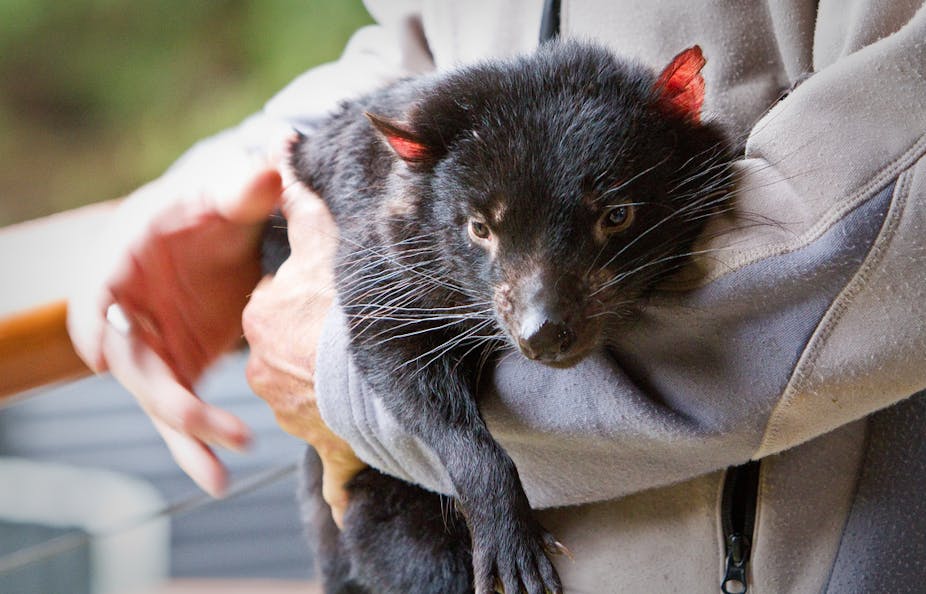Australia’s threatened animals and plants may have received a small win today — the announcement of Australia’s first threatened species commissioner by Environment Minister Greg Hunt in Melbourne.
The commissioner, Gregory Andrews, appointed from within the federal environment department, will coordinate conservation of “priority species”, including funding. While some conservation advocates were hoping for someone outside the department, Andrews will have the advantage of inside knowledge.
But for some species it is already too late. The commissioner was announced at the launch of the Action Plan for Australian Mammals 2012 by mammal experts John Woinarski, Andrew Burbidge, and Peter Harrison, which finds that nearly a third of Australia’s mammals have been lost or are on the path to extinction, largely due to introduced predators such as foxes and cats.

The current International Union for Conservation of Nature Red List records that 99 Australian animals are Critically Endangered — they have at least a 50% chance of extinction within 10 years. (You can read about some of them here)
The commissioner is an opportunity for the federal environment department to refocus on the detail of conservation, rather than the big picture. In the past the government has emphasised landscape conservation so exclusively that the Christmas Island Pipistrelle became extinct in 2009, right under the Commonwealth’s nose — the first mammal extinction in 50 years. By ignoring individual species, the government neglected the very values the general public associates with conservation.
But commissioner Andrews will have a big job in preventing further extinctions — particularly sourcing funding in such an arid financial climate.
Three cups of coffee to save species
The new Commissioner comes with no new tranche of funds to fulfil his mandate. Indeed public conservation funds around the country are going backwards, with direct consequences for threatened species.
For instance, the loss in February of South Australia’s last population of the Endangered Mallee Emu-wren was a direct effect of cuts to the State’s conservation budget – the parks service could not afford to prevent a perfectly controllable fire that killed off the birds.

Yet there is a high level of support in the community for preventing extinctions of threatened species. In a paper published last week in PLoS One, almost two thirds of the Australian public (63%) supported funding of threatened bird conservation. Only 6% explicitly opposed such payments.
People indicated that they were willing to pay, on average, about A$11 a year into a conservation fund for threatened birds. Only a few cups of coffee but conservatively this means that Australians would be willing to pay about A$14 million a year, and realistically about A$70 million.
This is substantially more than the $10 million a year thought to be needed to prevent Australian bird extinctions. Translating such enthusiasm into real dollars and action on the ground will be one of the key tasks for the new commissioner.
Could private conservation fill the gap?
If the State is unwilling to fund conservation adequately, despite a public mandate, perhaps the private sector needs to step in. One of the most successful groups in reversing population declines, particularly of the mammals featuring in the Action Plan, has been the Australian Wildlife Conservancy.
Funded partly by government but largely by tax-deductible donations, the AWC has established a network of private reserves around the country where research and adaptive management have been applied to great effect. In some places species like the bilby have been reintroduced to places where they have been extinct for many decades.

Under current arrangements, however, private conservation groups like the AWC or Bush Heritage cannot look after the species that occur only in national parks. Here the Commonwealth and the States retain strict control, even if they cannot provide adequate protection themselves.
Ironically this may make some species inside protected areas more vulnerable to extinction than they might have been on private land.
Such discussion, however, feeds into a more fundamental debate about the extent to which conservation is becoming subject to a conservative, free market agenda. Such an approach could see increasing devolution of government responsibility for conservation action to private organisations.
This would shift the onus of both conservation funding, and action, closer to the individual. Many conservation advocates are probably pretty Machiavellian – whatever works. However, in the long run, which protected area model is most resilient? What is in the best interests of the Australian public?
The answer is that we have no idea. The experiment is too new. In Namibia, where private conservancies are hugely popular, there is concern about the sustainability of financial models that rely on donor funds rather than visitors.
In Australia there are usually attempts to create an endowment so that reserve running costs can be drawn from the interest. But all models, private and public, rely on a vibrant economy. And all models rely on the social license afforded by democratic government.
It will be fascinating to see the approach adopted by the new Threatened Species Commissioner.

